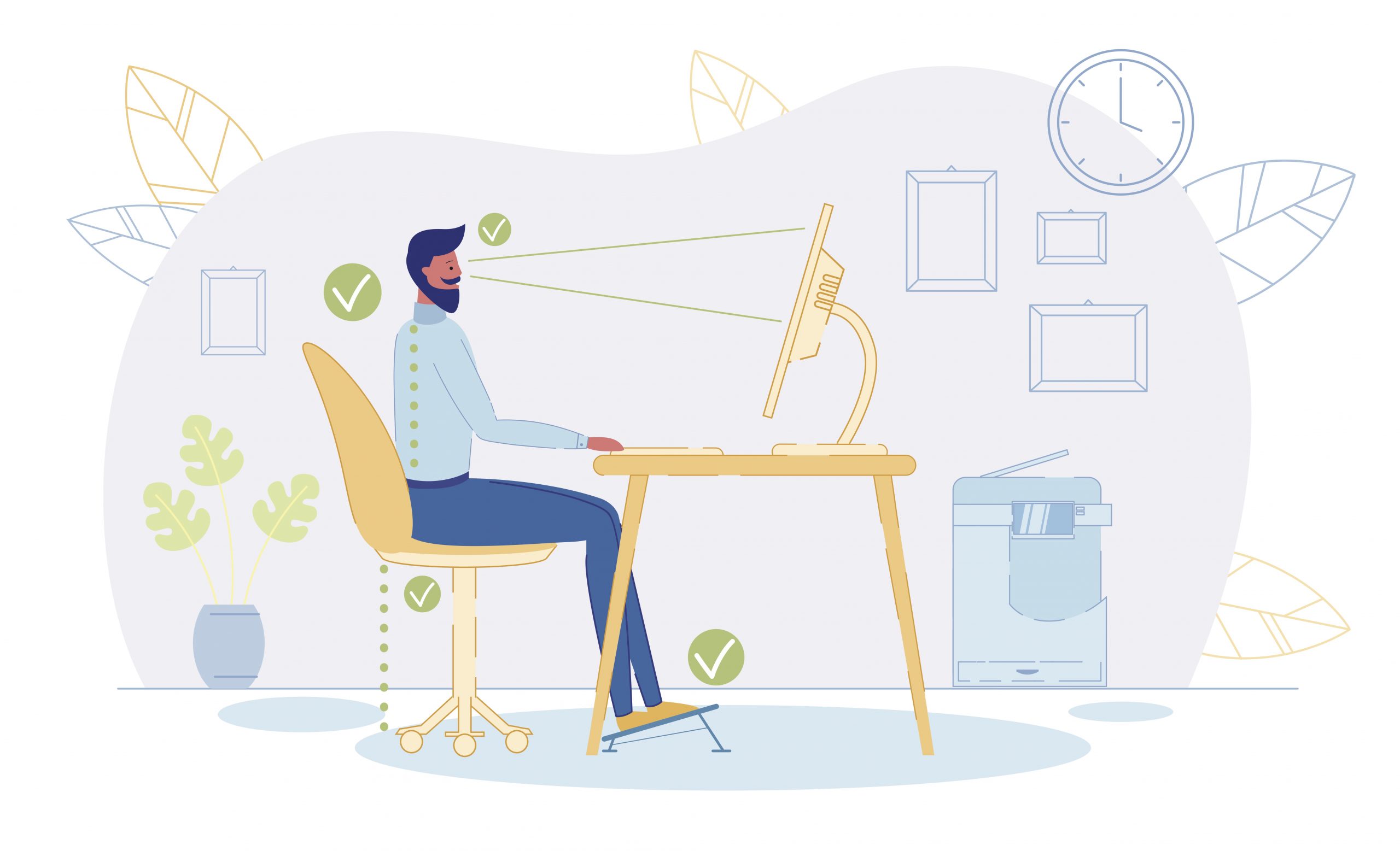As many of us continue to work remotely, it’s important to consider the importance of ergonomics for your home office.
Table of Contents
What is Ergonomics?
Ergonomics is the applied science of designing and arranging items used on a daily basis (such as during your full-time job) in the most efficient and safe way. For example, if your workspace is set up “ergonomically,” you are less likely to injure yourself and/or be distracted by your environment.
Transitioning from The Office to Your Home
You might’ve already had at least a desk and desk chair before COVID-19, but here’s a little more you can add to make your set up as ergonomic as possible.
Make sure your desk is at the right height. To ensure your desk is the right height, try this test: sit straight in a chair and put your arms at your sides and bend your elbows. Wherever your arms naturally rest in front of you, as if you were typing on a computer, is how high your desk should be.
Position your computer properly. This can vary depending on how many monitors you use. If you use one, make sure the screen is centered in front of you. If you use two equally, make sure the edges of the monitors meet in the center of your vision. With three, center the middle one in front of you and put the others on either side, angled slightly in with no gaps between them.
Use a flat keyboard. When your keyboard is tilted downwards, with the top row of keys slightly raised, it forces your wrists to bend up and can cause discomfort.
Practice your posture. To avoid a sore back, you want to sit with a neutral spine. A neutral spine, contradictory to how it sounds, isn’t actually straight but it’s shaped more like an “S.” To maintain that S shape, you should sit with both feet flat on the ground and your thighs parallel to the floor. An office chair that supports your lower back can also help you keep a neutral spine.
Don’t Forget to Take Breaks
This ergonomic rule is the same in the office as it is at home. Taking active breaks isn’t only good for your body, especially if you’ve been sitting in the same position for too long, but also for your mind and productivity. These breaks can include getting some fresh air outside, making yourself some lunch, or getting up from your desk to stretch.
Ergonomics are important to incorporate not only in your physical workspace environment, but also in your daily habits. Try making a few of the changes we suggested above to help with both your physical and mental health, whether you’re in the office or not.
By Taylor J. Bye, Customer Engagement Specialist





 Published: April 15, 2021
Published: April 15, 2021